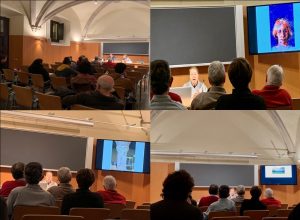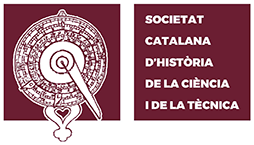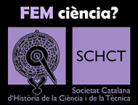“The past is inevitably part of the present”
Per Júlia Massó
El passat 20 de febrer de 2020, Ludmilla Jordanova va fer la ponència “Collections and Display: the Royal College of Physicians in London”, dins del cicle “Objectes perduts. Explicar i exposar ciència a museus i altres llocs públics”. En aquesta entrevista, parlem amb ella sobre la seva conferència, sobre el paper dels historiadors en l’art i les ciències i sobre els seus estudis en la cultura visual i museologia.

Ludmilla Jordanova (1949) és historiadora de la ciència, graduada en ciències naturals i en història de l’art i doctora en història de la ciència. Té una llarga carrera com a investigadora i professora en història moderna, història de la ciència, història cultural i arts visuals i museologia a les universitat d’Oxford, Essex, Cambridge, East Anglia, Londres i Durham. A la seva darrera etapa a la Universitat de Cambridge va dirigir el “Centre for Research in the Arts, Social Sciences and Humanities” (CRASSH), per passar després a exercir com a professora d’història moderna a King’s College, Londres. Actualment, dirigeix el “Centre for Visual Arts and Culture” (CVAC) del departament d’història de la Universitat de Durham i el seu programa de doctorat en cultura visual finançat pel Leverhulme Trust. També és membre del consell assessor del “Science Museum Group”, on actualment col·labora en l’exposició “Locomotion”. Treballa de manera regular amb artistes contemporànies, tot destacant la seva contribució editorial al desè aniversari del parc d’escultures “Jupiter Artland” a prop d’Edimburg. Més informació: http://www.ludmillajordanova.com/.
1. First of all, in order to contextualize this interview, I would like to ask you about the main points of your talk. Could you explain them?
The main point of my talk was to use a specific example of a medical institution in London to examine its collections, values and attitudes, and to show some of the larger themes that can emerge, such as how institutions value their history, which allow historians to understand better why collections are assembled and displayed and also to make comparisons with other institutions. I selected a few examples from the Royal College of Physicians (RCP) collections, and stressed the importance of visual and material culture, for example in helping to shape identity, and to give those who use the building a sense of the past. I suggested some of the ways in which taste and aesthetic preferences play a part, for example by comparing recently-commissioned RCP portraits, with more artistically adventurous ones at the National Portrait Gallery in London. I ended by pointing out that by putting Harvey’s portrait, for instance on mugs and on fridge magnets, that is on ordinary objects, many versions of the original become part of everyday lives, and that this is something that should interest historians. So I am interested in this institution and also in broader phenomena, and in seeing how institutions present and value their history. – visual and material culture approaches are helpful here.
2. In your talk you mentioned the William Harvey painting, the walking stick…items that are part of a collection (which belong to an institution). Which role do historians (or more specifically, historians of science and medicine) play in the display of these collections? And which role do they play in the institution itself?
Historians have no formal role in the institution. Some doctors do historical work, one for example has a doctorate in the history of medicine as well as medical qualifications. Historians use the archive and library extensively. I was invited to write a little book about their portrait collection, and they have involved other historians in similar ways over the years. I also sit on a committee at the College, which looks at the work of the Library, Archives and Museums Services. We meet twice a year in an advisory capacity mostly.
3. How should historians bring back to life this kind of collections or the different displays (for example, the genomic portrait) for the main public ? How do historians should encourage people to visit the museums and enhance the value of these collections?
Historians bring artefacts to life by undertaking careful research into them and then disseminating their research in a variety of forms. This could include doing TV programmes and making podcasts for example, or by writing accessible books, contributing to content on websites and so on. All these forms encourage audiences to engage with them. RCP puts on exhibitions, for example, and they would have historians as advisers, but the main work on them is done by curator. In other contexts, the Fitzwilliam Museum in Cambridge, for example, historians play larger roles as guest curators and as co-authors of catalogues. For many Fellows of the Royal College of Physicians, the collections are not seen as especially valuable so it’s an ongoing process to convince them of their significance and importance. Bringing artefacts to life always involves drawing attention to the people and relationships involved, those who made and paid for them, used and valued them, gave them as gifts and passed them on between generations.
4. Why is the past important? How does the past (and the visual culture related to it) help us study the present and the future?
Human beings tend to offer historical explanations for phenomena around them, even when these are not particularly well informed, as we see in newspapers and the media generally. For that reason it’s important professional historians are providing such accounts and not leaving it to others. We simply can’t understand the present without some sense of context, that is, of what led up to the current situation, and visual culture is an integral part of human existence, so it has to be part of our understanding of ourselves.
5. During your talk, you used the expression “The presence of the past”. Could you explain it a little more?
The past is all around us, in buildings and street names, for example. So the past is inevitably part of the present. Some practices pull it into focus, draw our attention to it. The way we hang portraits, write about them, give, exchange and handle objects that have significant associations with the past all affirm the presence of the past. I can go further say that sometimes these things happen specifically in order to affirm the presence of the past. The annual dinner in honour of William Harvey is a good example.
6. In general terms, visual culture is a way of studying a work that uses art history, humanities, sciences, and social sciences. It is intertwined with anything within our culture that communicates through visual means. So, in a way, it is a non-verbal communication… How does it combine with the spoken language (verbal communication)? Or, maybe, how could we combine them to communicate properly?
It’s really useful and important to think about words and images together. In fact I am thinking about a new project on that right now. The ways they combine are so diverse that it’s difficult to generalise. I often say that we need to think of visual culture in the many verbal contexts that surround it. So yes, as we know from advertising and propaganda, words and images together can be very effective, but not necessarily so. There are many examples of failure, where clear messages don’t necessarily get across.
7. You are a supporter of Mahogany Opera’s Snappy Operas Project and Opera Bohemia, which brings opera, performed by young singers, to parts of Scotland which would otherwise lack access to it. How would you say music is involved in your field of work? Could it be a part of the “visual” culture”?
So, by extension, we should include sound too. That’s more complicated. If we are talking about music, we can look at opera for example, where you are seeing and hearing simultaneously. Operas are broadcast on the radio but it’s not the same. But there are many sounds that aren’t ‘music’, such as the noises that machines make, which are important cultural phenomena too. I have a strong interest in classical music, and so I am alert to the possibility that we could think about music too in this interdisciplinary way, and indeed that musicologists could benefit from knowing more about visual culture. A few have this interest, and write about visual culture in musical contexts, but it’s rare.
8. As a historian of science and also of art, as a professor of visual culture and as a director of the Centre for research in the Arts, Social, Science (and a lot more) you have a lot of experience in different fields and a valueable multidisciplinary vision. I would like to know your vision about art and science being seen as separate worlds… Should we integrate them and how should we do it?
There clearly are ways in which art and science are completely separate in terms of training and day to day work, for example. But there is also a trend to bring them together, which has been fashionable for the last few decades. There are many ways of doing this, and usually it’s artists responding to scientific and/or medical ideas. Or writers using science and/or medicine in fiction, poetry or plays. I am sure more conversations, in whatever forms seem to work best, is the way forward. The problem as I see it is that artists and writers take more from science than they give back to it. Museums are clearly central institutions that can bring different groups together.
9. Lastly, as the first female President of the British Society for the History of Science and as an expert in art and literature concerned with themes and ideas relating to the natural world, the body and gender differences…. What do you think about the role of women in the history of science and visual culture studies?
When I was first studying the history of science there were very few women in the field, but that’s now changed, and there is also a lot written from a feminist perspective. Visual culture is rather different, there have long been more women studying and teaching it, and feminist perspectives are well developed. Of course it’s important to stress that men do feminist work too!

Figure 1. Ludmilla Jordanova during her talk (20.02.2020)



